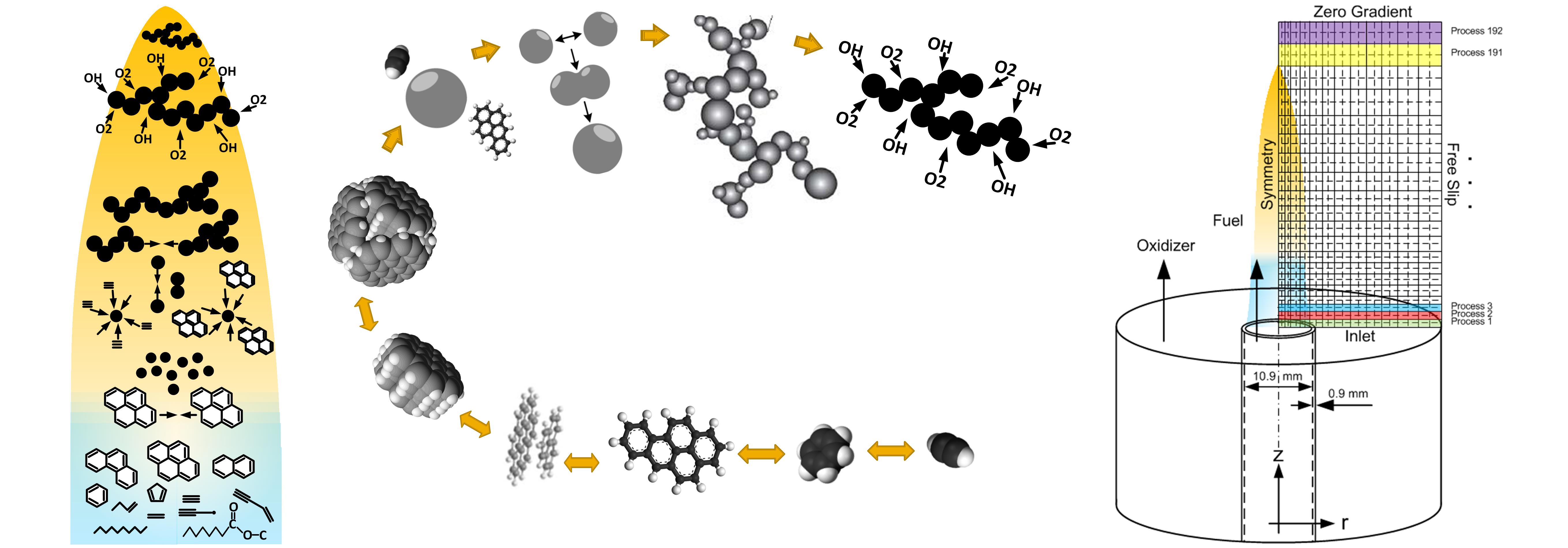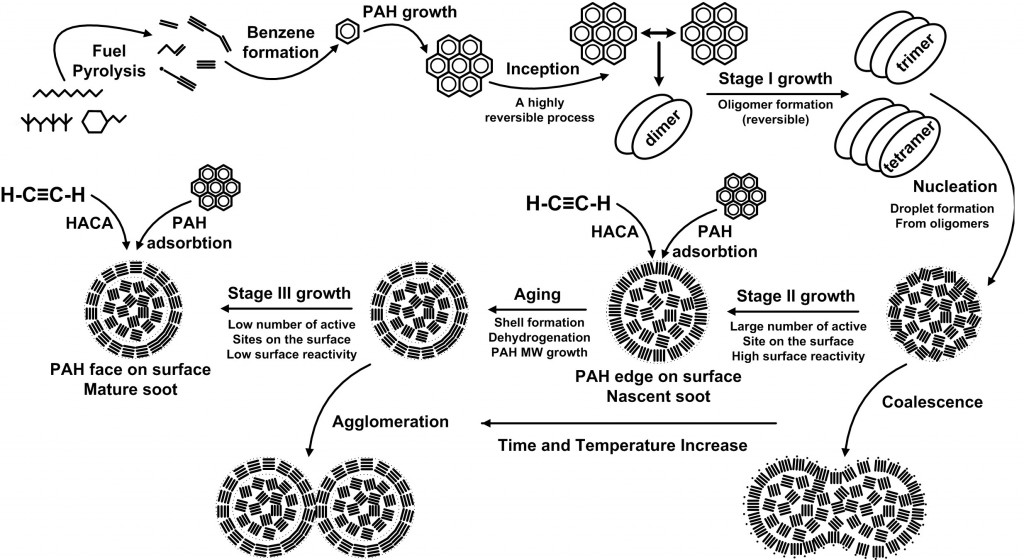
soot formation in a laminar coflow diffusion flame, different processes involved in soot formation modeling, Coflow flame and the computational domain.
This program focuses on developing detailed and fundamental models for soot formation in flames. Current state of the art soot modeling has many uncertainties and accompanying adjustable constants. Work is being done to replace these uncertainties and constants with fundamental thermodynamic theory and physics. The goal is to create a well-validated model that can give fundamental insight into soot formation processes under a very wide range of operating conditions utilizing different fuels. These insights will help develop soot formation models that can be utilized by design engineers to create lower emissions combustion devices. There are three main projects underway:
1) Developing Reversible Soot Formation Models
The basis for most soot formation models is the understanding that soot is created from the clustering of gaseous phase polycyclic aromatic hydrocarbons (PAHs), and grows via additional condensation of PAHs and heterogeneous surface reactions primarily involving acetylene. Models include the effect of PAHs and acetylene going from the gas phase to the solid phase; however, they neglect the reversibility of these soot formation processes. Recent studies show that PAH clustering and condensation are highly reversible processes. Utilizing results from thermodynamic, quantum mechanic, and molecular dynamic studies, a novel model has been developed that explicitly accounts for the reversibility of the PAH clustering and condensation processes. This new model continues to be refined and further improved, with the long term goal to condensation the reversibility of heterogeneous surface reactions as well.
2) Modeling the internal nano-structure of soot particles
The internal nano-structure of soot particles has a profound effect on how soot primary particles grow and soot aggregates are formed. In addition, knowledge of soot internal nano-structure may help us better describe and model the evolution of soot morphology. Currently none of the existing soot models consider the internal nano-structure of the soot particles and the models do not track the changes in the internal structure of soot particles. By using fundamental thermodynamics and quantum mechanics relations, a novel model, i.e. SSF model, is being developed in CRL which aims to describe the changes in the internal nano-structure of the soot particles as they evolve in flames. The new model can significantly improve soot modeling accuracy.
3) Modeling of soot particle size distributions
…
4) Modeling of practical fuels.
Almost all of the detailed soot modeling studies are performed for simple gaseous fuels such as methane and ethylene for which handling the gas phase chemistry is manageable. However most of the engines and combustion devices use liquid fuels such as diesel, biodiesel and jet fuels. These liquid fuels may have hundreds of species and modeling their combustion is difficult. In CRL, we use different surrogates as representative of liquid fuels to study soot formation for these practical fuels with our detailed soot model. High performance computation is obtained by using parallel codes to solve the detailed combustion chemistry coupled to the soot aerosol dynamics equations. In previous studies, we have investigated soot formation for surrogate for Jet A1, GtL, n-decane, and B100 biodiesel. The validated detailed models for practical fuels will be a basis for developing applied models for engine applications.

A schematic of the Surface Shell Formation Model by Kholghy et al, Carbon, 100, 508-36, 2016



